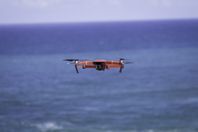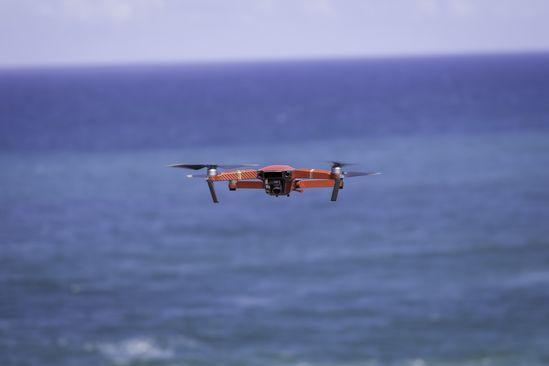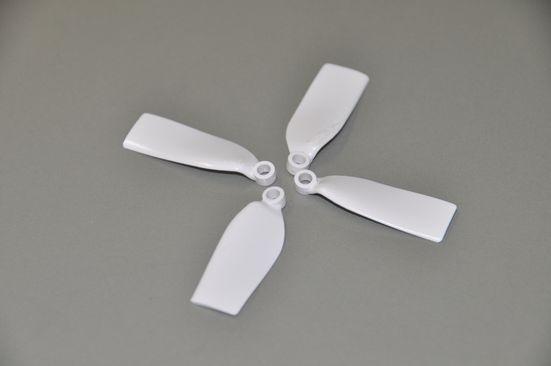Asia
EMEA

LANXESS Canada Contacts
Contact our Sites in Canada
Media Inquiries
General Inquiries
Please click here to e-mail LANXESS Canada with product inquiries and general requests.
Global Press Releases
2018-08-09
LANXESS provides wings
- High-performance plastics from the specialty chemicals company are used in the propellers on aerial drones
- More flight time thanks to lightweight materials
Cologne – Unmanned aerial vehicles, commonly known as drones, have undergone rapid development over the past few years. Whether as a toy for children and adults or – in top quality – as support for rescue operations and in farming, drones are becoming increasingly common.
Market research institute Gartner estimates that around three million drones were sold worldwide in 2017 – almost 40 percent more than in the previous year. Gartner also predicts that drones will be one of the strongest-growing sectors in consumer electronics over the coming years. Corporate consultants at PwC expect a global market of almost USD 130 billion for drone-based services, for example in infrastructure, transport and security. Due to the diverse range of applications that can be carried out using the devices, demands on drones are increasing. This opens up new opportunities for growth for material manufacturers, for example in high-performance plastics.
More flight time thanks to lightweight solutions
One challenge facing manufacturers is the limited flight time of drones. As well as improving battery capacity and investigating new sources of energy, manufacturers can also reduce the energy consumption of drones and thus increase their flight time by taking advantage of lightweight solutions, like in the automotive industry. Here, specialty chemicals company LANXESS is able to draw on its experience in the lightweight construction business for the automotive sector and now also offers lightweight solutions for the drone industry using its high-performance plastics.
At Chinaplas 2018 in April this year, the LANXESS High Performance Materials (HPM) business unit presented a range of high-end material solutions, including a drone propeller made of short glass fibre-reinforced Durethan (Polyamide 6). Thanks to its balanced material properties, the injection molded parts are lighter while offering good strength and rigidity. The material is resistant against aging by UV rays and therefore well-suited for use outdoors. As a result, drone propellers made of LANXESS plastics convince with their attractive appearance and their longevity.
As well as wings and propellers, the high-performance plastics can also be used for drone bodies and landing gear. The materials help to reduce the weight of the aerial vehicle and thus enable longer flight times, as well as reducing vibrations and noise. What is more, the materials improve impact resistance, reduce any interference of metal materials with radio signals, simplify the production process and increase the flexibility of the product structure design.
“In light of the rapid development of the high-tech industry and the increasing popularity of electric drives, LANXESS sees significant, additional potential for the use of its products. Based on LANXESS products PA6, PA66 and PBT, we have developed innovative solutions to meet the demand for high-quality products,” says Dr. Axel Tuchlenski, Head of Global Product and Application Development at LANXESS’s business unit High Performance Materials.
Lightweight materials from LANXESS
LANXESS high-performance plastics are used in a wide range of areas, such as in electrical and electronic applications, in lightweight design, in charging equipment, battery solutions, sensors for automated driving, in motor housings and in e-mobility infrastructure, such as charging stations. The engineering materials under the Durethan brand withstand mechanical stress over a wide temperature range and offer benefits with regard to strength, toughness, heat resistance, durability and aging resistance. As well as the polyamide materials of the Durethan series, LANXESS offers high-performance materials under the Pocan (PBT, Polybutylenterephthalate) and Tepex (thermoplastic fiber composites) brands.
Forward-Looking Statements
This company release contains certain forward-looking statements, including assumptions, opinions, expectations and views of the company or cited from third party sources. Various known and unknown risks, uncertainties and other factors could cause the actual results, financial position, development or performance of LANXESS AG to differ materially from the estimations expressed or implied herein. LANXESS AG does not guarantee that the assumptions underlying such forward-looking statements are free from errors nor does it accept any responsibility for the future accuracy of the opinions expressed in this presentation or the actual occurrence of the forecast developments. No representation or warranty (expressed or implied) is made as to, and no reliance should be placed on, any information, estimates, targets and opinions, contained herein, and no liability whatsoever is accepted as to any errors, omissions or misstatements contained herein, and accordingly, no representative of LANXESS AG or any of its affiliated companies or any of such person's officers, directors or employees accept any liability whatsoever arising directly or indirectly from the use of this document.
LANXESS is a leading specialty chemicals company with sales of EUR 9.7 billion in 2017 and about 19,200 employees in 25 countries. The company is currently represented at 74 production sites worldwide. The core business of LANXESS is the development, manufacturing and marketing of chemical intermediates, additives, specialty chemicals and plastics. LANXESS is listed in the leading sustainability indices Dow Jones Sustainability Index (DJSI World and Europe) and FTSE4Good.
- Gallery







